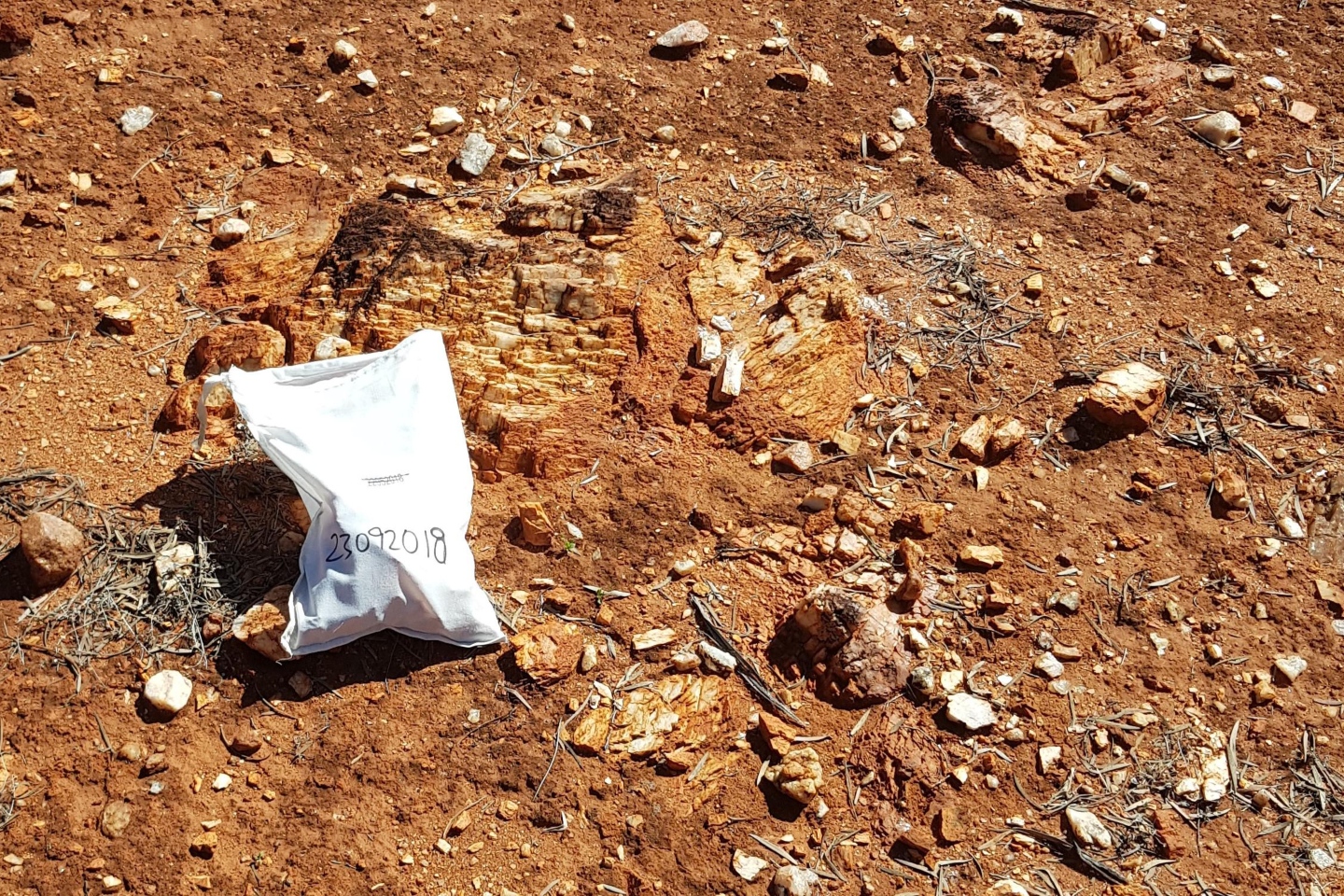Multiple outcropping lithium-caesium-tantalum (LCT) pegmatites carrying high lithium oxide grades of up to 4.6 per cent have been revealed in follow-up mapping and sampling by Venus Metals at its Deep South prospect within its Youanmi lithium project in Western Australia. The company says broad surrounding caesium-tin anomalism is indicative of an extensive and mostly-hidden granitic and pegmatitic late-phase intrusive system.

Multiple outcropping lithium-caesium-tantalum (LCT) pegmatites carrying high lithium oxide grades of up to 4.6 per cent have been revealed in follow-up mapping and sampling by Venus Metals Corporation at its Deep South prospect within in its Youanmi lithium project in Western Australia.
The company says broad surrounding caesium-tin anomalism is indicative of an extensive and mostly-hidden granitic and pegmatitic late-phase intrusive system.
The project lies in the Youanmi greenstone belt in WA’s Mid West region, about 20km south-west of the Youanmi gold mine. The belt is known to be prospective not only for gold, but also for pegmatite-hosted LCT mineralisation.
The pegmatites recently mapped by the company correlate with broad geochemical anomalism for LCT mineralisation, with values up to 10,591 parts per million caesium and up to 473ppm tin.
Venus’ latest discovery follows initial reconnaissance over poorly-outcropping bedrock, comprising mafic-ultramafic and granitoid rocks that include pegmatites. During the work, the company identified two outcropping lithium-rich pegmatites at its North Zone, where sampling returned the grades of up to 4.6 per cent lithium oxide.
Management says that, including its original discovery at North Zone with lithium oxide hits of 4.6, 4.1 and 3.26 per cent lithium, its geological mapping has now discovered three main zones of outcropping high-grade lithium-rich pegmatites in an area of about 300m by 200m. It also says the mapping of other pegmatites in the immediate vicinity suggests it is open-ended in all directions.
The new discovery areas at the company’s designated Central Zone show sample results of up to 4.5 per cent lithium oxide. The results at the East Zone are up to 4.61 per cent lithium oxide and at the original North Zone, it is up to 4.6 per cent lithium oxide. While the north-trending Central Zone is interpreted to dip gently to the east, the orientation of the other two zones has yet to be determined.
Venus Metals Corporation managing director Matthew Hogan said: “These follow-up rock sampling results received are outstanding with up to 4.6% Li2O and expand the lithium-rich pegmatites over 300m X 200m into three known zones which potentially only represent a small section of the mineralized system in this poorly exposed area“.
Additionally, reconnaissance indicates that areas characterised by high lithium grades coincide with the presence of coarse-grained petalite, as confirmed by x-ray diffraction (XRD) analyses of rock samples.
Both petalite and spodumene are the most common ores of lithium. Both are lithium aluminium silicates of similar composition and both may coexist in the same lithium deposits, such as at the Earl Gray play at Mt Holland.
The Deep South prospect lies within the southern part of the company’s 100 per cent-owned exploration licence, about 450km north-east of Perth and 44km south from the Youanmi Gold Mine. Lithium mineralisation was discovered by Venus following a regional ultrafine soil sampling program that initially defined an extensive north-east-trending lithium anomaly extending over an area of about 1400m by 400m.
Management believes the Youanmi fault zone, a crustal-scale structure that defines the tectonic boundary between the Southern Cross and Murchison Domains, might be a controlling focus for LCT pegmatite emplacement.
It also believes the Youanmi project may share the regional structural focus in common with the Mt Holland lithium project that has an estimated mineral resource of 189 million tonnes at 1.5 per cent lithium oxide some 350km south from Venus’ Deep South prospect and the Mount Cattlin deposit, a further 150 km to the south on the western margin of the Southern Cross Domain.
While exploration at Deep South is at an early stage, currently-known outcropping lithium pegmatites in the sand-covered area might represent just a handful of surface indicators of a potentially bigger, but buried swarm of mineralised pegmatites.
With the Deep South project area shaping up as a potentially significant new lithium find, Venus has picked up the exploration pace to better understand what might be lurking below the surface, with preparations underway for further mapping to help understand the extents of the overall pegmatite occurrence and planning for a reverse-circulation (RC) drilling program.
Management hopes that drilling will test the depth extents of outcropping pegmatites and their orientations, identify additional pegmatites hidden below surface cover, determine the reasons behind local variations in lithium mineralogy and test lithium-rich zones and the broad caesium-tin geochemical anomalism – all to gain a better understanding of what might lie underfoot.
One of the brightest bodies in the sky is Venus rising. That might be worth bearing in mind.
Is your ASX-listed company doing something interesting? Contact: matt.birney@businessnews.com.au















